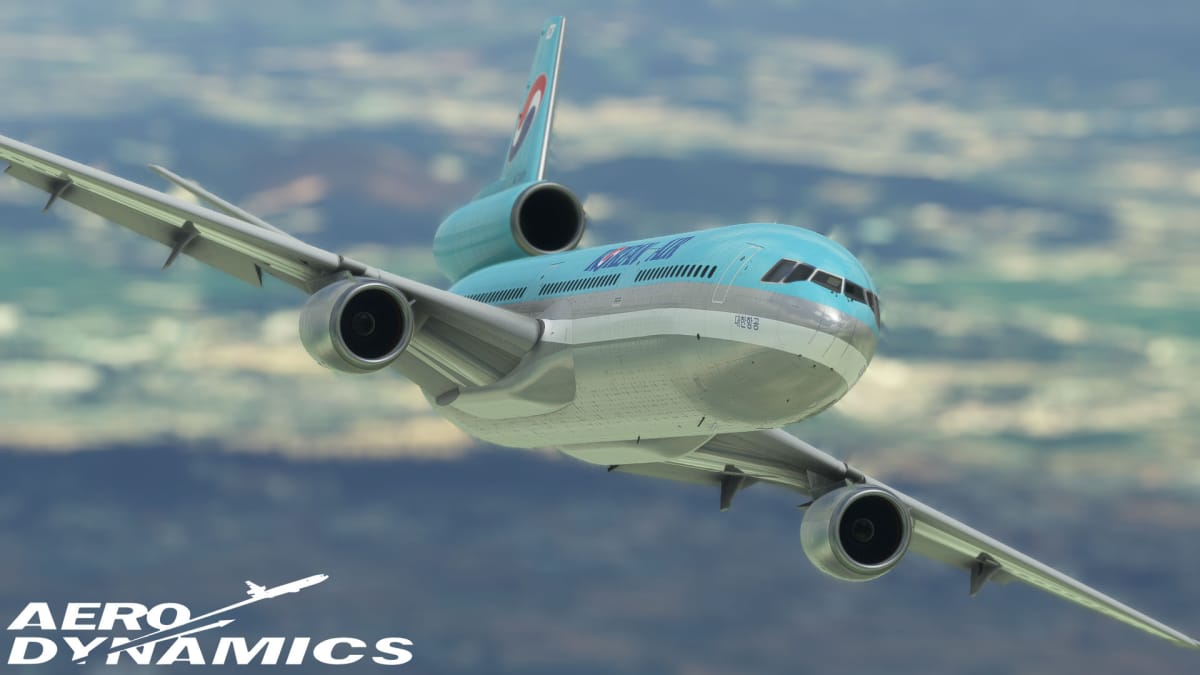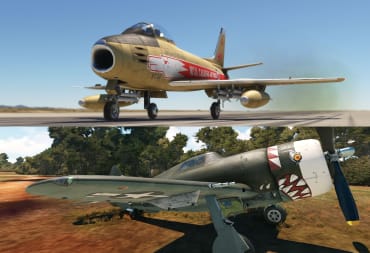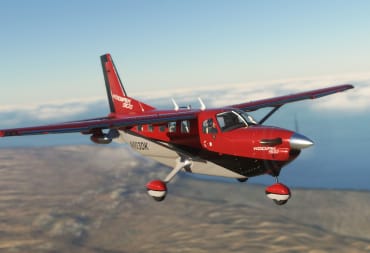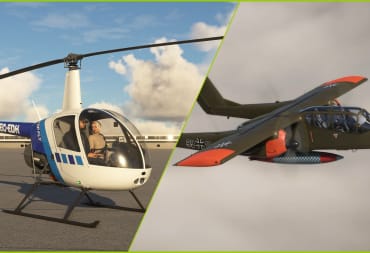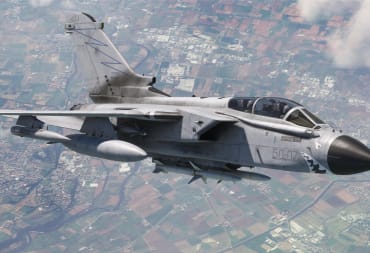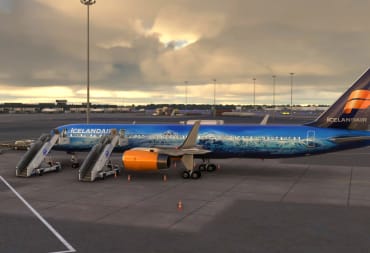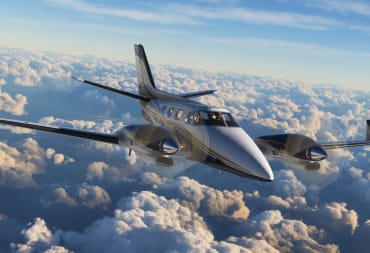Today third-party developers had relevant news to share about upcoming Microsoft Flight Simulator add-ons, while Microsoft itself released a legendary aircraft.
We start with Aero Dynamics, which provided plenty of new screenshots and an extensive development update on its freeware McDonnell Douglas DC-10 and KC-10 Extender. You can follow the development of this amazing widebody tri-jet on the developer's Discord server.
Welcome to our second quarterly report of the year 2023. We want to express our heartfelt gratitude to the exceptional flight simulation community for their unwavering support, engagement, and valuable suggestions regarding our KC/DC-10 project. Each and every comment we receive is highly valued, and we encourage you to continue sharing your feedback, which plays a crucial role in our progress.
In this latest update, we have once again dedicated our efforts to enhancing both the visual appeal and the operational efficiency of our aircraft. This quarter has been marked by significant advancements and the successful achievement of numerous personal milestones.
For those who may be new to our initiative or are just learning about it, we are a dedicated group of passionate enthusiasts committed to developing a freeware KC-10 and DC-10. With the invaluable expertise of some of our team members who have previously served as KC-10 crew members, we are resolute in our mission to create the most authentic DC-10 platform for commercial flight simulation.
Please note, all imagry is considered "Work in progress" and certainly does not reflect what our aircraft will be on release!
Model Exterior:Throughout this quarter, our utmost focus has been on elevating the quality of our aircraft's exterior model to showcase an unparalleled level of attention to detail. We have dedicated ourselves to refining our techniques, ensuring that we deliver a visually captivating jet that surpasses expectations. This encompasses not only the texture aspect but also the intricacies of the aircraft's physical model.
As you explore the exterior, you will witness an impressive level of precision, with individually rendered panel lines, accessible opening panels, and various other components that offer an interactive experience. These interactive elements directly impact the aircraft's operation, encompassing fuel panels, APU power input, bleed air input, and conditioned air doors. The underlying objective of this was to create an immersive environment that caters to those who relish the "walk around" experience.
In addition, we have introduced a range of pre-flight tasks that must be completed before you can safely initiate taxiing. These tasks can be accomplished manually, directly on the aircraft's exterior, or conveniently automated through the use of the Electronic Flight Bag (EFB). By incorporating these pre-flight requirements, we aim to provide a comprehensive and authentic simulation of the preparatory phase, further enhancing the realism of the overall experience.
Visual Effects:The visual aspects of a flight simulator addon have always captivated users, serving as a delightful treat for the eyes. Traditionally, development groups have offered a separate "Visual Effects Package" as a paid download alongside the aircraft. However, taking full advantage of the capabilities offered by this flight simulation platform, we have made the bold decision to include these visual effects directly within our aircraft package, and the best part? It comes at an astounding price of $0.00, available while supplies last.
By default, operators of our aircraft will now have the privilege of experiencing a wide array of breathtaking effects as they interact with the natural elements. These meticulously crafted effects include, but are certainly not limited to, mesmerizing engine strake vortices, captivating engine intake vapor, enchanting over-wing vapor, and the mesmerizing dance of flap and wing-tip vortices.
We firmly believe that these awe-inspiring visual effects will elevate your flight simulation experience to new heights, immersing you in the realism and beauty of aviation. Our commitment to providing these enhancements as an integral part of the aircraft demonstrates our dedication to delivering a comprehensive and unparalleled simulation package.
Model Interior:Our team has been diligently focused on enhancing the interior of our aircraft to deliver a truly immersive experience. As previously mentioned, our KC/DC-10 will showcase multiple cabin models designed to cater to various needs. We have dedicated considerable time and effort to perfecting both the passenger and cargo interiors, ensuring they meet the highest standards.
Similar to the attention given to the exterior, the interior cabin is meticulously designed with user interaction in mind, enhancing the overall simulation experience. Our aim is to provide a comprehensive environment that replicates the real-life intricacies of managing an aircraft cabin. With this in mind, we have included key interactive elements such as light and door controls, allowing users to seamlessly manipulate these essential cabin features. Additionally, we have implemented an interactive galley that invites users to engage with this vital area of the aircraft. Moreover, convenient access to lavatories is provided, ensuring a more "authentic" and "complete simulation".
APU and Fuel System:The APU (Auxiliary Power Unit) in the KC/DC-10 shares similarities with other aircraft APUs, but it requires careful attention to avoid a starting logic flip. To initiate the APU startup procedure in the KC/DC-10, it is necessary to first activate one of the tank 2 fuel pumps, followed by moving the APU start switch to the run mode. Unlike most aircraft where the APU can be directly started by moving the switch to the start position, the KC/DC-10 introduces additional steps.
In this particular aircraft, before moving the APU start switch, it is crucial to ensure the distribution of APU engine oil and the proper opening of the APU inlet and exhaust doors. This preparation process typically takes approximately one minute, and the Flight Engineer will be alerted of the APU's readiness through an indicator light. Once confirmed, the APU start switch can be moved to the start position, initiating the normal APU start sequence. Notably, various parameters such as N1 (rotational speed of the low-pressure compressor), EGT (exhaust gas temperature), and N2 (rotational speed of the high-pressure compressor) interact in different ways at different stages of the start sequence, such as manual spoolup, ignition, and self-sustaining rotational speed. We have meticulously modeled these interactions, bringing us closer to achieving an accurate and realistic cold start simulation.
While the fuel system implementation is mostly complete, with the exception of the ahrsi section (aerial refueling), our focus will now shift to the Pneumatics system, which is the final requirement for an authentic cold start simulation. Additionally, we will be intensifying our efforts to enhance system detail throughout the aircraft. Once the cold start procedure is successfully achieved, our attention will turn towards refining the navigational systems to ensure a comprehensive and accurate simulation.
The Hydraulic system is nearing completion in its initial iteration, marking a significant milestone in its development. We are proud to announce that the aircraft now features a fully custom simulation of the normal Hydraulic system operation, reflecting our commitment to deliver a comprehensive and realistic simulation experience.
It is essential not to overlook the seemingly minor aspects, such as manipulating the flight controls. Unlike a direct and immediate response to your control inputs, the simulation will immerse you in the intricate workings of the hydraulic system. You will witness how the actuator moves, taking into account numerous variables that contribute to its behavior and, in turn, influencing aileron movement and other control responses.
We are continuously improving our approach to systems like these. With each iteration, we diligently incorporate additional components and refine the simulation to achieve greater accuracy. By striving for physical accuracy in the hydraulic system, we lay the foundation for streamlined development processes in the future. For instance, in the event of failures, the system will react as expected, mirroring real-world scenarios and simplifying the development of failure simulations.
We remain dedicated to pushing the boundaries of realism in our simulation, and the hydraulic system is instrumental in achieving this goal. By meticulously replicating its complexities, we aim to provide an engaging and authentic experience that captivates virtual pilots.
Future Plans and Development Opportunities:Our focus this summer is to continue to put in the work to make this bird get up in the air. As beautiful as this aircraft is, it still had a long way to go on the development side before she is ready for her first public maiden flight.
The support and enthusiasm from our community are deeply appreciated, and we consider it a privilege to work on such an extraordinary aircraft. Our unwavering commitment is to deliver a high-quality aircraft that exceeds the expectations of our community and followers!
If you share a passion for flight simulation and have a desire to contribute to the development of the DC-10 project, we warmly welcome you to join us as an enthusiastic developer. We are constantly seeking new individuals who share our vision and are eager to be part of this exciting journey. For more information, contact myself or @~R15h~!
An Anniversary Worth Remembering:During the late 1960s, the development of a revolutionary navigation approach was underway. Known as Area Navigation (RNAV), it aimed to enhance aircraft flexibility by enabling more efficient routes between navigational aids. One notable collaboration involved KSSU (KLM, Swissair, SAS, and UTA) and the Collins Radio Company, who jointly worked on the creation of the Area (Inertial) Navigation System, referred to as ANS-70 and AINS-70.
The Area (Inertial) Navigation System utilized cutting-edge computer technology to process data from the aircraft's instruments and sensors. With the aid of a comprehensive database, the system generated flight plans that could be automatically followed, reducing the workload on the flight crew. By incorporating various computations, starting from fundamental dead reckoning calculations based on magnetic heading, true airspeed, magnetic variation, and wind speed, the system determined the approximate aircraft position within a 0.25 nautical mile margin.
The ANS/AINS-70 system introduced significant advancements in automation, enabling the selection and tuning of VOR and DME beacons based on an internal database. This approach, unique for its time, simplified area navigation and presented a breakthrough in aviation. Moreover, the system offered the option to integrate three inertial reference units, enhancing dead reckoning and providing essential air data when navigational aids were out of range.The introduction of the system carried a substantial cost, around $100,000 USD per unit in 1972 (approximately $700,000 adjusted for inflation). Nevertheless, numerous airlines, including KLM, Swissair, UTA, and National Airlines, embraced the ANS/AINS-70, first equipping their DC-10 aircraft with this pioneering technology, introducing it into service in June of 1973.
At Aero Dynamics, we are dedicated to creating an exceptional McDonnell Douglas DC-10 simulation, encompassing various systems, including the ANS/AINS-70. We believe that this groundbreaking navigation system deserves to be experienced in Microsoft Flight Simulator, offering a unique level of automation that differs from modern systems. By incorporating this system, we aim to provide aviation enthusiasts with the opportunity to enjoy the authentic feel of flying in the past, without compromising immersion or navigational accuracy.
Update: while I was writing, TFDi Design just released a detailed video of its McDonnell Douglas MD-11, creating a lovely one-two punch of classic tri-jets. This is the first time the aircraft is shown publicly in a video running on Microsoft Flight Simulator.
You can check it out below, providing a look at the flight deck, the avionics and systems, and the cabin.
More images and another development update come from DC Designs, showcasing the F-4 Phantom. The aircraft should be released within a week or two.
I’ve been working on final tasks in the Phantoms prior to their launch, which should happen within a week or two at the most. Sim Acoustics are putting the final touches to the sound today, and I’m busy with small but significant things like engine smoke effects for the J-79 engines ( and the Speys ) which are a hard effect to get right, and other bug-hunting tasks and general polishing of the product.
One of the major things about the Phantoms that may catch some users out ( and which is also quite hard to code correctly ) is the airspeed indicator. This is a multi-display unit that registers Knots Indicated in two different ways, along with Mach, which is a dynamic part of the instrument based on pressure altitude. The same instrument was present in the real F-14A and B Tomcats, but I kept it out of those aircraft as I felt it would be hard for many users to understand, as a lot don’t understand the relationship between knots indicated and Mach number. The Phantoms will have the correct unit at launch, and this will also be added to the Tomcats in their forthcoming update later this year, to further bring the F-14s up to a higher realism standard.I’ve been working on the Phantom’s cockpit night-lighting today, which is tied to potentiometers for brightness as per most of my aircraft. A few final things to add there both in the front and rear seats, and that should be it for the cockpits.
As I mentioned last week, the Phantoms have been much delayed, for which I apologise as I know how many people are eager to get their hands on them. These are complex aircraft and becoming more so with each and every release, so they just take a lot of time to get “right”, and even then I suspect there will be at least a few little bugs and errors on my part when they’re released. If so, I will be able to quickly update to correct those as we’re launching with Just Flight first, who are lightning quick with such things. That should set things up perfectly for the Marketplace launch.
SimWorks Studios released the first image of the model of its Daher Kodiak 900, following their excellent Kodiak 100. Yet, that's not all. The developer announced the Daher TBM 850, 910, and 960.
News update time and cutting straight to the chase. First off, we are happy to share with you a render of our upcoming Kodiak 900! The plane was announced earlier this year and work started immediately, so now we have a completed exterior model and a near-finished interior. Click the first image to read some more details about the K900's development.
Next, it is time for us to formally announce the TBM series! Back in January we signed a license with Daher which allows us to create the TBM850, 910 and 960 for Microsoft Flight Simulator. Work on the aircraft will begin in August. Release is well down the road, but the -significant- upside is that all the needed avionics will be mostly ready: the EFIS40 of the TBM850 is very similar to what's used on the PC-12, while the G1000 and G3000 have finally matured and support a plugin system which will help us create an authentic avionics package. Last but not least, the TBMs will inherit all the codebase of the Kodiak's & PC-12, so while a lot of the groundwork will be done in advance, they will still improve upon whatever the previous aircraft offer.
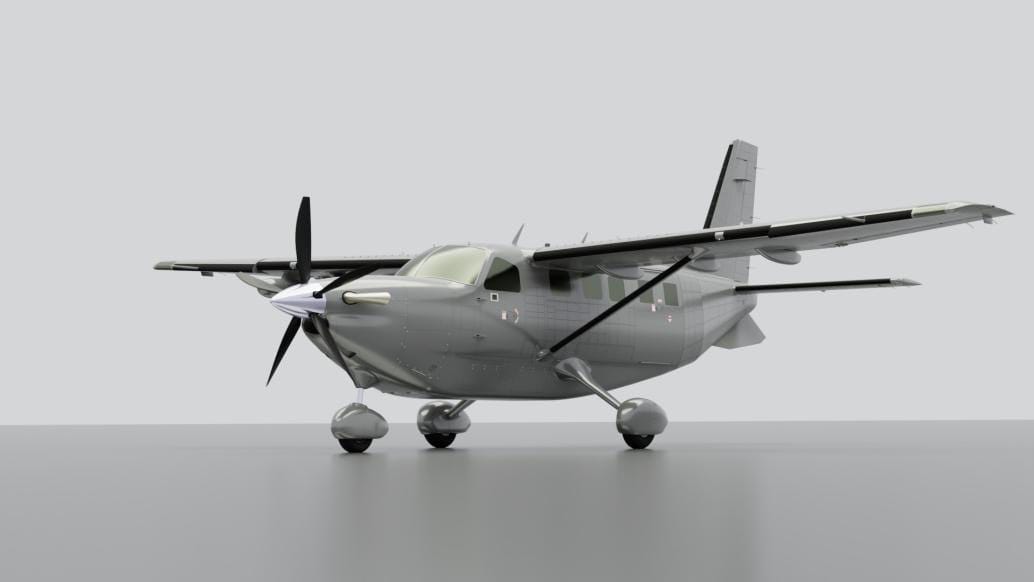
Another announcement comes from Orbx, and it's Sacramento Airport (KSMF) in California, United States. The airport, in development by Matteo Veneziani, will include the following features.
- Detailed ground markings and textures
- Animated jetways with sounds
- Dynamic airport lighting
- Custom airport clutter, GSE and taxiway signs
- Animated train
- Basic terminal interiors
- Orthoimagery of the airport area
Moving on to releases, Microsoft itself launched the Boeing 307 Stratoliner, developed under contract by Aeroplane Heaven. It's the 10th aircraft of the Local Legends series and it comes with 4 liveries )Boeing Delivery, Emerald Harbor, WorldTravel, and AREA), for $14.99. It's exclusive to the official in-sim marketplace, so you need to find it there.
Last, but not least, iniBuilds released London Stansted (EGSS) in the UK. It's currently available on the developer's own store for $17.57.
It promises the following features.
- Hand-made ground textures with crisp, bespoke texture sets (Runways, aprons, paths, roads)
- True-to-life airport landside recreation with custom ground decals, signposts, vegetation, parking barriers and more
- Accurately modelled and positioned dynamic airport lighting
- Highly detailed models of all airport buildings, objects and surroundings
- Up to date airport layout reflecting the current, real-world location
- Custom built jetways with realistic variations using PBR texturing and animations
- Official GSX Profile included in scenery folder
- Level of Detail (LOD) optimisation for every model to encourage the best performance possible
- Use of the latest MSFS SDK features to allow for the best optimisation and performance possible
- Custom static aircraft
- Full iniManager compatibility to configure your scenery for the best possible performance for your system
- Bespoke taxi signage as it is in the real world
Microsoft Flight Simulator is currently available for PC, Xbox Series X|S, and Xbox Cloud Gaming, including Game Pass. If you'd like to learn more, you should stay tuned on TechRaptor as we have daily Microsoft Flight Simulator news to keep you updated on the many add-ons coming and released for the sim. We have also recently interviewed Microsoft's Jorg Neumann about the Antonov An-225 "Mriya" and iniBuilds' CEO Ubaid Mussa on the work of the popular third-party developer. If you're interested in reviews, you can check out Orbx's Stockholm Arlanda and Oslo Gardermoen Airports, iniBuilds' New York-JFK Airport, and RHDSimulations' Boeing 767-300ER.
